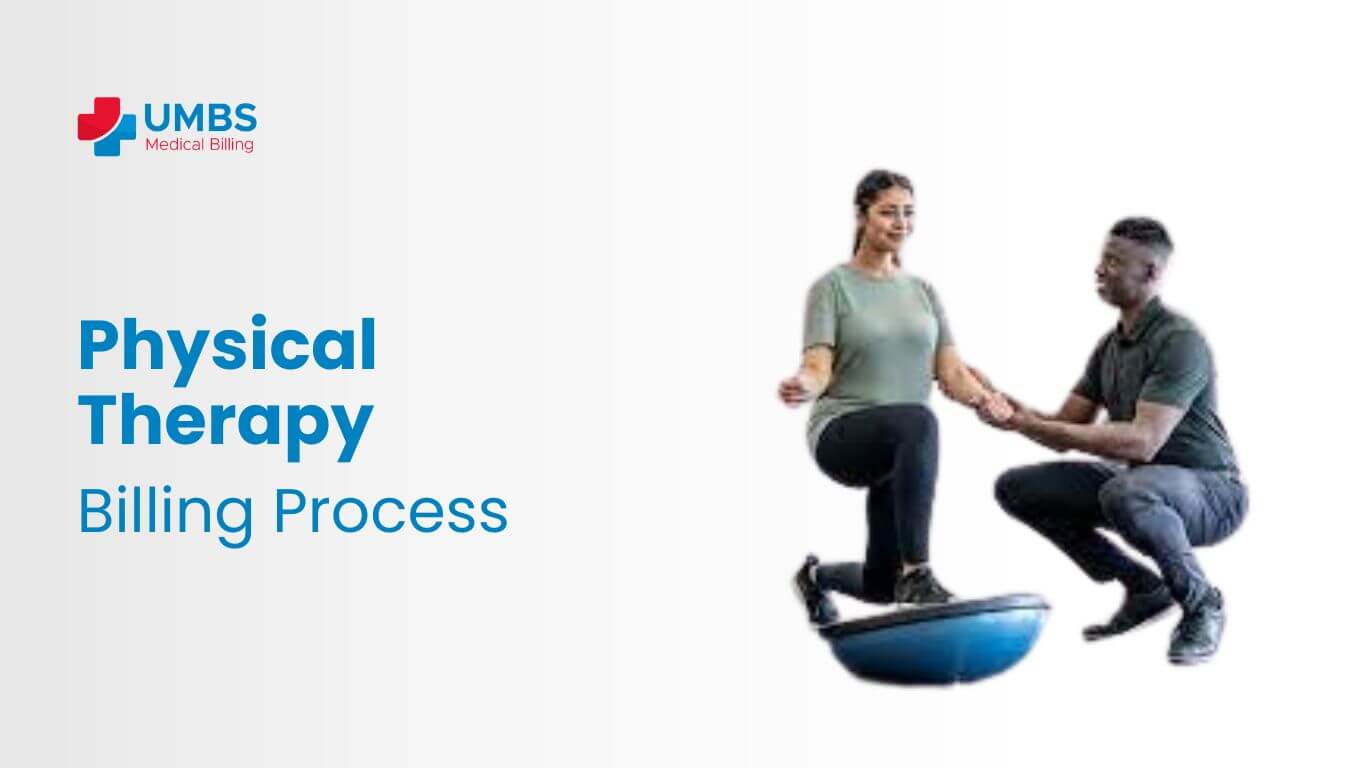Medical Billing is a systematic process that involves multiple factors to facilitate the easy and smooth reimbursement of medical claims. The Physical Therapy Billing Process consists of several key steps and procedures.
Physical therapy billing plays a crucial role in sustaining clinic operations, compensating staff, and facilitating investments in essential equipment. Timely and accurate billing practices are essential to cover these expenses effectively. Whether you’re a staff therapist, a physical therapy manager, or support staff responsible for billing and insurance verification, understanding the physical therapy billing process is invaluable.
Additionally, we explore how implementing the right Electronic Health Record (EHR) or Electronic Medical Record (EMR) software system can streamline and simplify the billing process, alleviating administrative burdens and ensuring efficiency.
Physical Therapy Billing Process
1. Prior-authorization eligibility and verification
The Physical Therapy revenue cycle initiates with the collection of patient and insurance information, coupled with the determination of eligibility for additional funding. To enhance efficiency in this process, transparent pricing policies and automated insurance coverage tools come into play. These tools serve a dual purpose: firstly, they help filter out patients who may face challenges affording the services offered, and secondly, they contribute to streamlining the overall operations of the practice.
Notably, the adoption of transparent pricing policies ensures clarity for both patients and practitioners, fostering a more straightforward financial arrangement. Moreover, the incorporation of automated insurance coverage tools is a strategic move that aligns with the broader goal of optimizing the revenue cycle.
2. Coding and Charging
After obtaining authorization and eligibility, information is translated into alphanumeric codes to ensure accurate billing and reimbursement. Standard coding procedures such as ICD-10 and CPT are employed for consistency and compatibility. Accurate coding is crucial for preventing denials, encouraging timely reimbursement, and supporting research and quality improvement.
3. Claim submission
Submitting claims is a crucial step in Physical Therapy Billing, involving the sending of information for scrubbing. The revenue team reviews costs, CPT codes, and diagnoses to ensure proper labeling and support for each service. Payment is expedited when compensation is received from a reliable insurance company.
4. Remittance process
Also known as payment posting, this step involves collecting payments from insurance companies. Instead of paying for each session individually, insurance companies typically pay the entire sum at once. Doctors and carriers negotiate contracts for batch payments to ensure regular fee evaluations and avoid missed revenue opportunities.
5. Insurance Follow-up
This step involves following up with insurance companies on outstanding claims. Ensuring accurate insurance details helps bill the correct company, and the process involves looking for resolutions with the help of insurance companies.
Additionally, the insurance follow-up process is not just about seeking reimbursement but also about identifying and resolving any issues that might arise during the reimbursement process. It requires collaboration and communication with insurance companies to address any discrepancies, clarify billing information, and ensure that the claims are processed accurately.
By actively engaging in insurance follow-up, healthcare providers can proactively manage their revenue cycle, reduce the likelihood of claim denials, and maintain a positive cash flow. It is a strategic element in Revenue Cycle Management (RCM) that requires persistence, expertise, and a commitment to resolving any obstacles that may hinder the timely reimbursement of services provided to patients.
6. Patient payment collection:
In the dynamic landscape of healthcare, payment collection stands out as a crucial element shaping the financial interaction between doctors and their patients. Beyond its monetary implications, this process holds significant sway over the overall well-being of physicians. Efficient payment collection is fundamental to sustaining the financial health of healthcare practices, providing the necessary resources for delivering top-notch patient care and maintaining operational excellence.
Modern solutions have ushered in a transformative era in payment collection by integrating cutting-edge technologies. Among these innovations, online payment options through patient portals have emerged as a game-changer.
This technological leap not only streamlines the payment process but also offers patients a user-friendly and secure platform to settle their bills promptly. Embracing these integrated solutions aligns with the evolving expectations of patients, who increasingly seek convenience and transparency in their interactions with healthcare providers.
7. Data Recording and Reporting:
Recording weekly or monthly practices in one place, such as a shared drive, helps improve and overcome average financial performance. Regular financial reports show a healthcare organization’s revenue, cash flow, and RCM strategy impact on profitability.
These steps in the Physical Therapy Billing Process are essential for maintaining the financial stability of healthcare organizations. Identifying inefficiencies, improving processes, and utilizing data can boost revenue, cut costs, and enhance patient care. For more detailed therapy billing and coding standards, visit United Medical Billing Services. For expert Physical Therapy Billing Services.
Doc and CPT codes for physical therapy billing
Obtaining reimbursement for physical therapy services hinges on precise documentation of the services rendered and the corresponding submission of accurate CPT codes, also known as Common Procedural Technology codes. Your documentation should delineate the specific treatment administered during each session, such as 27 minutes of therapeutic exercise or two units thereof, in addition to the remaining time devoted to assessment or treatment.
This meticulous approach serves to prevent claim denials and mitigate the risk of fraudulent billing practices in physical therapy. Below, you’ll find a list of commonly used CPT codes, along with detailed information on CPT codes and billing units.
| CPT Code | Name |
|---|---|
| 97110 | Therapeutic Exercise |
| 97112 | Neuromuscular Re-education |
| 97116 | Gait Training |
| 97140 | Manual Therapy |
| 97530 | Therapeutic Activity |
| 97535 | Self-Care/Home Management training |
| 97750 | Physical Performance Test or Measurement |
| 97161 | Low Complexity Evaluation |
| 97162 | Moderate Complexity Evaluation |
| 97163 | High Complexity Evaluation |
| 97164 | Physical Therapy Re-evaluation |






